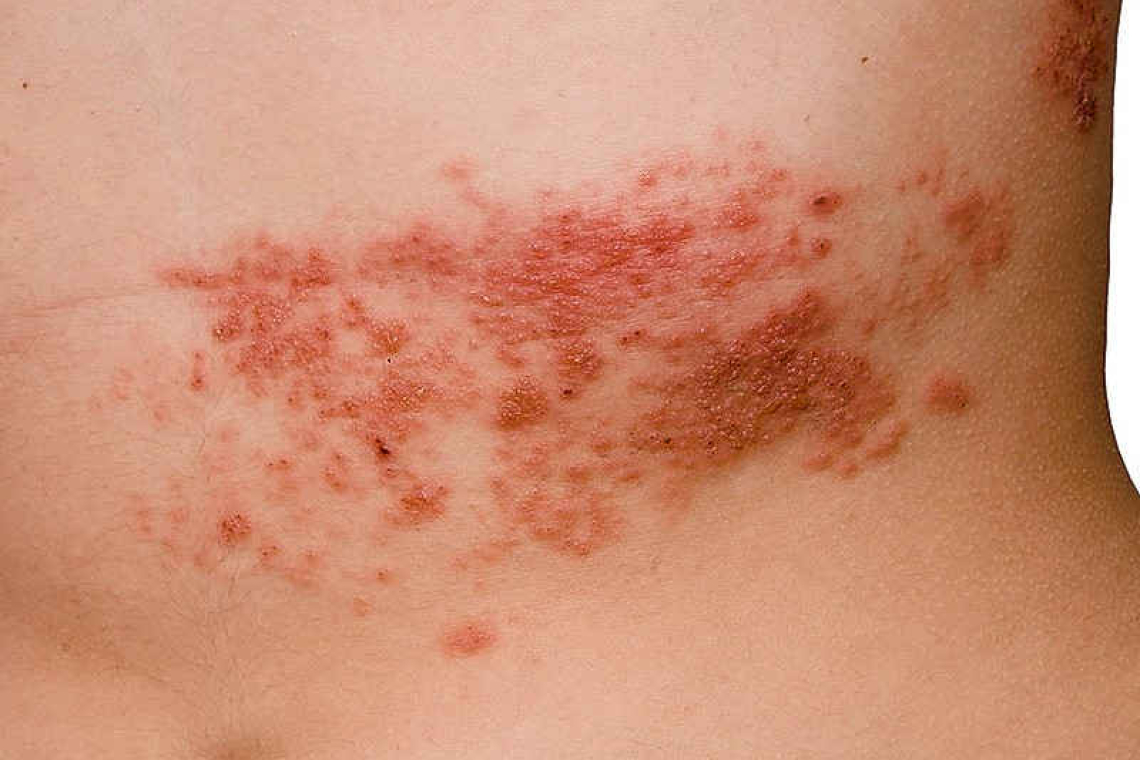By Colin Michie
Your skin like dawn
Mine like dusk
One paints the beginning
of a certain end
The other the end of a
sure beginning
~Maya Angelou “Passing Time”
We should celebrate the increasing lifespans of our elders more often. Those generations have witnessed many great changes; they can teach us, guide us, tell us stories we need to hear. However, becoming elderly comes with challenges, particularly a reduced capacity in immune defences.
Minute by minute, our immune cells check and kill any microbes they find. However, some viruses hide particularly well. With age and less surveillance, they may break out and cause illness. Notable culprits that follow this pattern are herpes viruses; they remain latent in our nerve tissues without causing problems over many years. Sade sang about the “finger on the trigger for the years to come” (Clean Heart). One of those fingers is varicella zoster virus (VZV). This virus causes shingles as it emerges through nerves into the skin.
There are eight herpes viruses in humans. A first infection with these is the mildest. Varicella zoster initially causes chickenpox. Usually, an innocent disease for most children, some may not be aware they have had it. VZV enters by the respiratory system. It is highly infectious, so was effectively spread between us when I was a youngster taken to “chickenpox tea parties”. The blisters can cause scarring as they originate deep in the skin. A single blister may result from only three viral particles damaging skin cells and their molecular supports. Small numbers of children suffer with severe chickenpox, some die – particularly if they are receiving immunosuppressant therapies. VZV can invade the nervous system, it can predispose youngsters to serious bacterial infections in the skin and deep tissues such as necrotising fasciitis. In pregnant women, VZV can damage the foetus. After the initial infection, VZV takes up residence in our nerves, for life.
VZV reactivation causes shingles in about 1 in 5 of those over 50. Shingles starts as a belt or girdle of blisters along an area supplied by a sensory nerve, on one side of the body. It is more common on the chest and shoulders; it may affect the eyes and hearing. The blisters are full of VZV virus, so a shingles sufferer is very infectious to anyone who has not been previously infected.
The skin often tingles before VZV blisters develop, but the greatest problem is pain later. Although the rash may last up to a month, severe neuralgia pain often persists. This resembles a burning or gnawing sensation. Topical creams such as calamine for open blisters, or pain-relieving peppers – capsaicin – for crusted ones, may afford some relief. Pain can be managed medically with anti-inflammatories, or trials of gabapentin or antidepressants. Treatments for neuralgias are challenging; new approaches are being developed, but shingles pain affects daily activities, the quality of life, the ability to work. Shingles may be recurrent. It is a common reason for hospitalisation, particularly among frail older folk.
In the 1990s, a successful vaccine was developed against chickenpox, using live VZV that had been attenuated so that it could not cause illness. At the start of this month, by way of a 25th vaccination birthday, the US Centres for Disease Control estimated that more than 3 million cases of chickenpox, 9,000 hospitalizations, and 100 deaths had been prevented each year by chickenpox vaccination. Vaccination prevents the pain of shingles. Children and older adults can be vaccinated. A newer vaccine released in 2017 is based on part of the VZV virus. This is proving effective too.
Vaccines are inevitably a source of worry for different reasons. All of us should be asking questions such as: “Do we need it?” “What is it really for?” “What are its side effects?” “What does it cost?” Travellers know too that countries differ as to which vaccines they recommend. The recent pandemic raised the profile of vaccines to perhaps the highest level ever. All of us have experiences about vaccines that a few years ago we might not have imagined. The VZV vaccine has proven its value and safety in preventing one of the challenges of ageing. It is routinely used by Hospital workers globally too, to ensure they do not pass on the chickenpox virus to their immunocompromised patients, unwell children or pregnant mothers. This allows safer transplantation and immunological treatments to be used in large Hospitals and health-care centres.
We should all consider giving a chickenpox vaccine to our children and recommending it to our elders. It would paint their skins and nerves, safely. It could save them significant future pain and health problems.
Useful resource:
https://www.cdc.gov/vaccines/vpd/varicella/public/index.html







